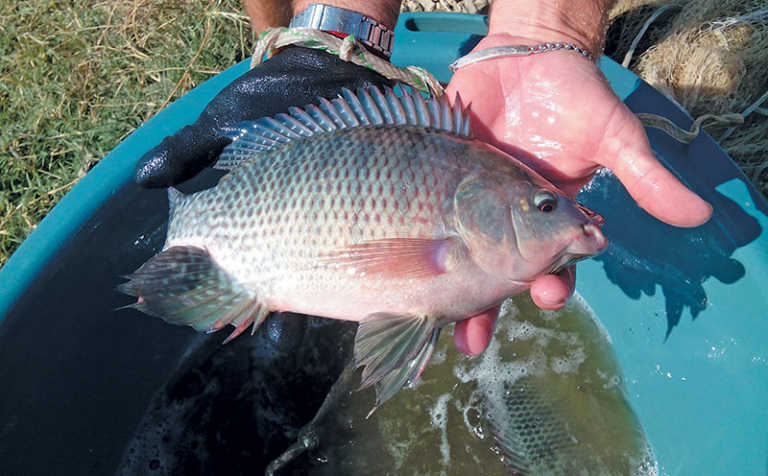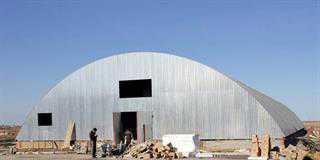
Photo: Nicholas James
A Lowveld export fruit farmer, Hans (not his real name), has a farm north of Komati. His farm is situated at an altitude of 308m, and he uses water from the Lomati River for irrigation.
Hans used 10ha of heavy clay soil, unsuitable for crop production, to construct a tilapia pond farm, and now produces over 100t of fresh fish every year, which he markets locally in Kangwane, Mpumalanga.
This Lowveld region has water temperatures that range from about 30°C in summer, to between 15°C and 17°C for three months during winter. The growing season for tilapia is about eight months.
Pond management
Hans’ half-hectare ponds were carefully constructed to ensure that they were 100% drainable, which is essential for good pond management. Each pond is separately filled and drained.
All effluent water is channelled via gravel traps to a sump, which, in turn, overflows through an artificial wetland that purifies the water. The ponds are regularly fertilised with chicken manure or superphosphate and urea to promote rich zooplankton and phytoplankton growth.
These abundant natural food resources result in the far more rapid growth of these juvenile fish than would be possible in tank-based systems. The fish are deep-bodied and healthy, prospering on a wide variety of natural food organisms, and reach a weight of 150g within three months after stocking.
Fish production
Hans chose to breed his own fingerlings (juvenile fish). This did not involve using mongrel tilapia of unknown ancestry from the river, or a neighbour’s farm dam, but high-quality, improved genetic stock from a professional breeder.
The fish were propagated in a purpose-designed hatchery using greenhouse tunnels, with large tanks fitted with hapas (floating, suspended net enclosures).
A small building serves as a facility where the fry are sex-reversed to male, and then grow to fingerlings in hapas in green water. These fingerlings are size-graded before the ponds are stocked; the grading is done on a rotational basis to yield market-sized fish throughout the year.
A great investment
Since genetically improved tilapia reach 500g in eight months, Hans has no trouble producing saleable-sized fish in less than a year, even with a three-month cool period. The tilapia grow so rapidly in the food-enriched water that supplemental feeding is not required until the third month, after which the fish are pellet-fed.
The larger specimens are gill-netted from the ponds at first, and the ponds then drained to harvest the balance.
Generally, very uniform-sized fish are achieved.
After drying out, the ponds are refilled, fertilised and restocked, repeating the cycle. Hans also uses the nutrient-enriched water from the sump to irrigate his orchards, reducing his fertiliser needs.
To increase annual production, he is considering erecting tunnels over the end of each pond to elevate water temperature, and using mechanical paddle-wheel type aerators.
Hans’ 10ha of former wasteland now earn him an income in the millions. The investment opportunity is indisputable.
Nicholas James is an ichthyologist and hatchery owner.













